

ASOR UNDERTAKES HUMANITARIAN HERITAGE WORK IN LBLIB GOVERNORATE
U. S. DEPT. COOPERATION AGREEMENT NUMBER: S-IZ-100-17-CA021
Work Has Begun with Half of the Funding Secured—$5,000 in Matching Funds Sought
* This report is based on research conducted by the “Safeguarding the Heritage of the Near East Initiative,” funded by the US Department of State. Monthly reports reflect reporting from a variety of sources and may contain unverified material. As such, they should be treated as preliminary and subject to change.
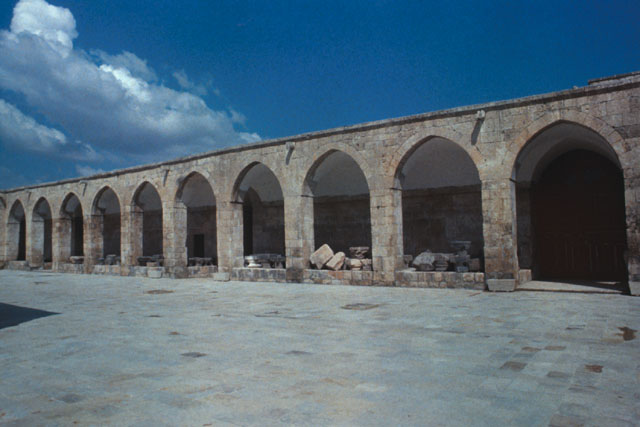
Idlib Governorate has been particularly hard-hit over the last six years of the Syrian conflict, and the region and its people are in dire need of humanitarian assistance. Basic humanitarian assistance in the form of food, housing, and medical supplies is of course critical, but humanitarian assistance in the form of cultural heritage support is also needed as part of collective relief efforts. Such cultural aid not only demonstrates the concern and compassion of the international community towards the Syrian people and their collective cultural identity, but also provides much-needed jobs and income to people whose former livelihoods have become unsuitable during this conflict.
Aerial bombardment campaigns by both Syrian regime and Russian forces have devastated dozens of towns and villages throughout the province. Most recently, the town of Khan Sheikhoun was targeted in a chemical weapons attack that killed 92 people, including civilians and 30 children. ASOR Cultural Heritage Initiatives has also gathered information on 116 cultural heritage sites in Idlib Governorate that have been damaged as a direct result of instability and ongoing fighting in the area. As the conflict continues local Syrians have fought to protect and preserve the countries multitudes of heritage sites.
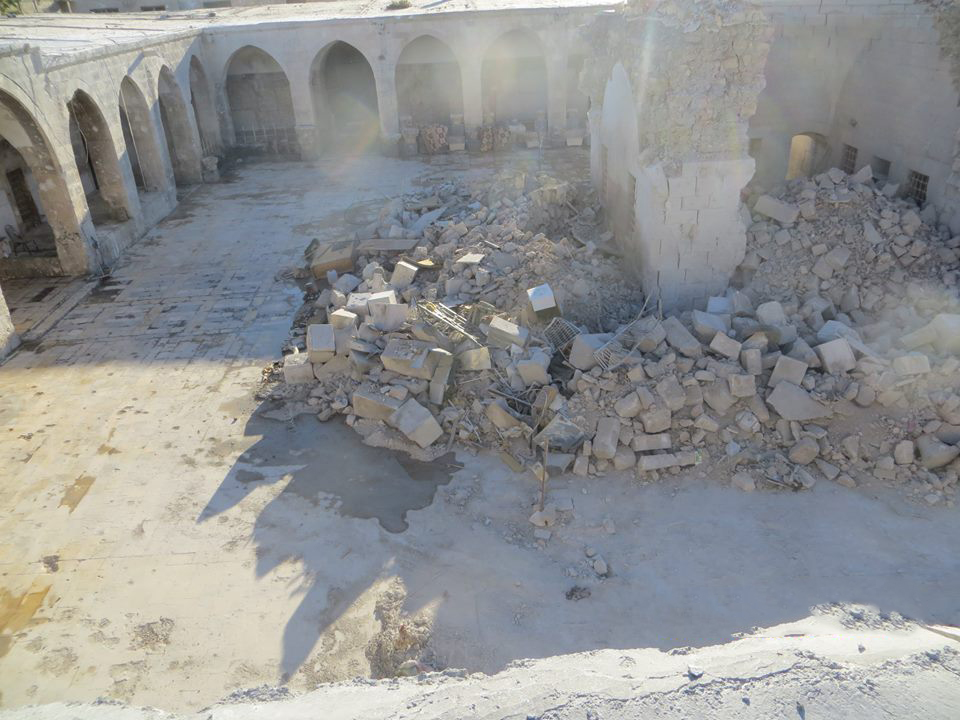
Damage from the June 2015 Airstrike (TDA-HPI; 2015)
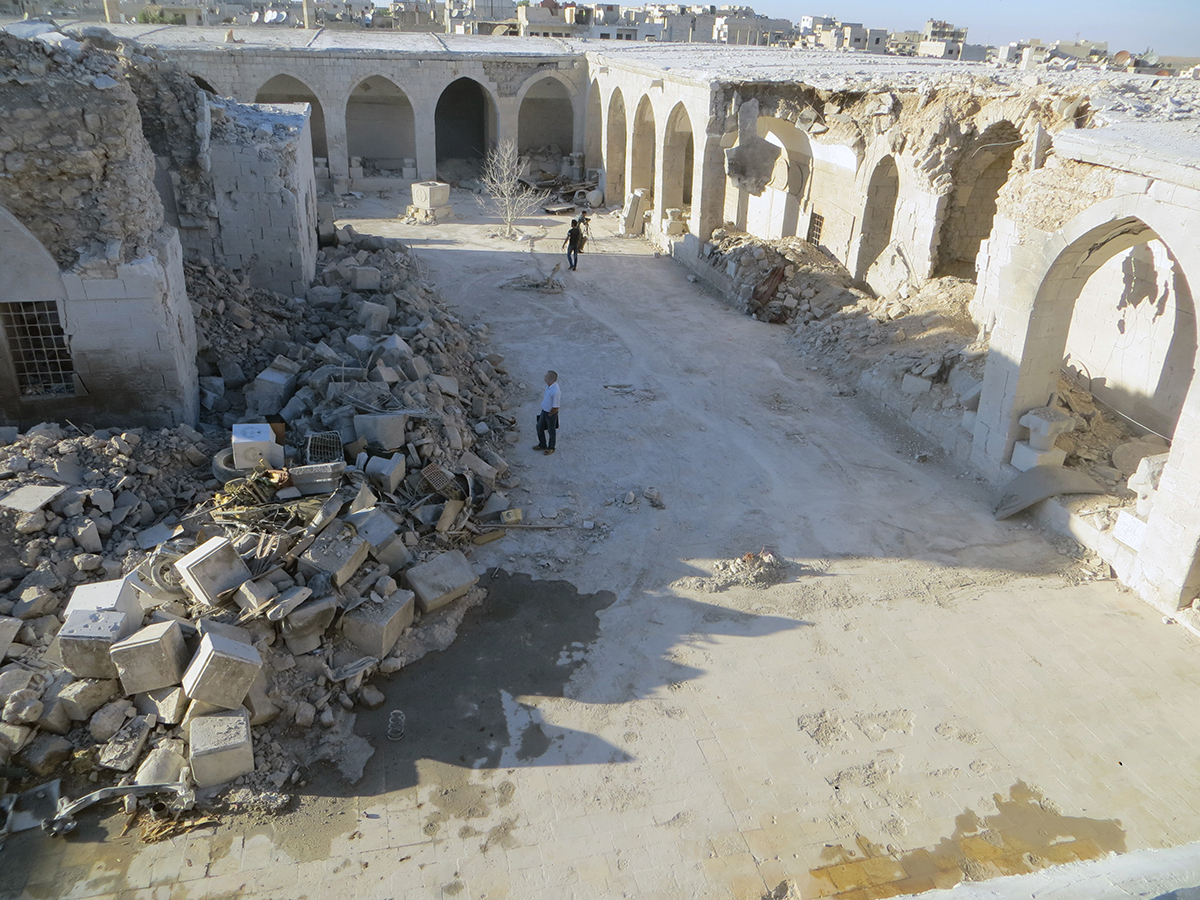
Damage from the June 2015 Airstrike (TDA-HPI; 2015)
Damage to the Al Ma’ara Museum
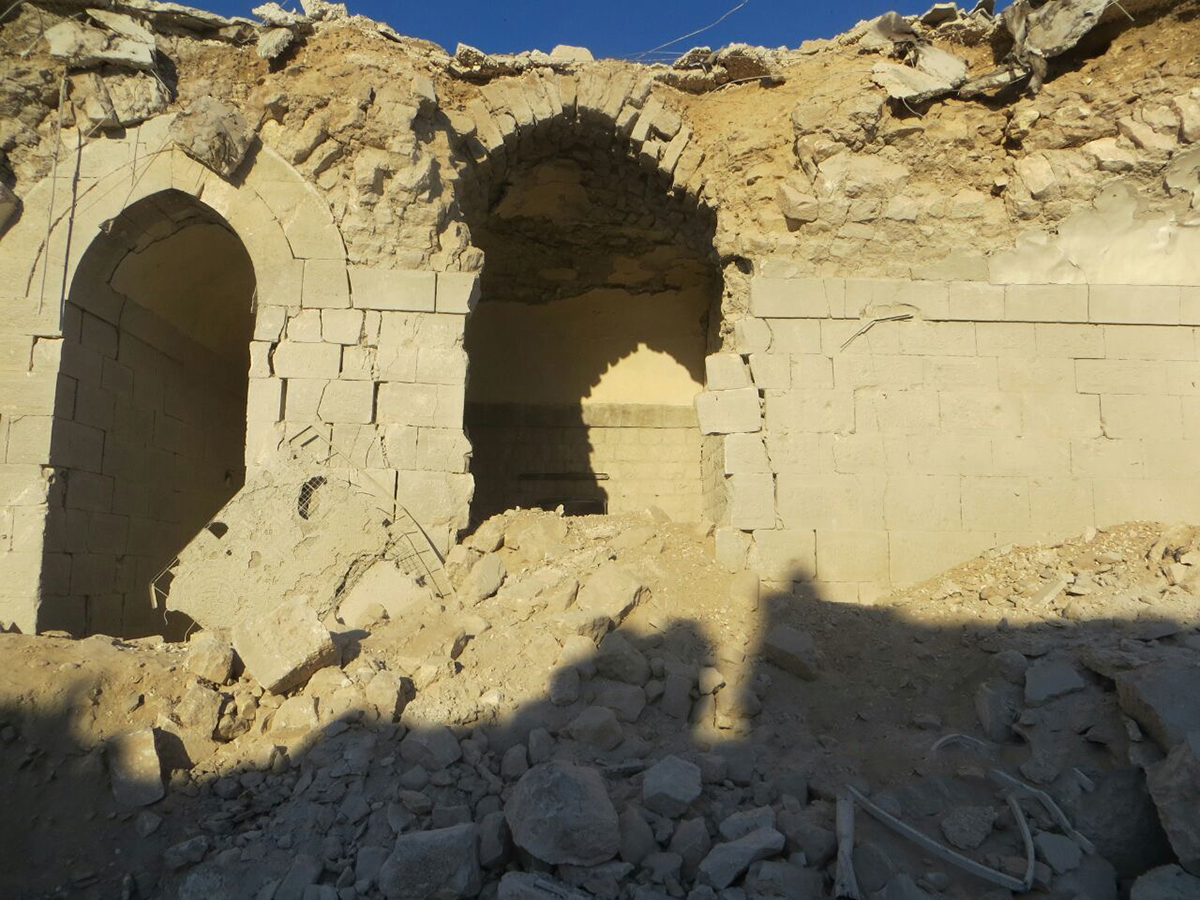
Damage from the June 2015 Airstrike (TDA-HPI; 2015)
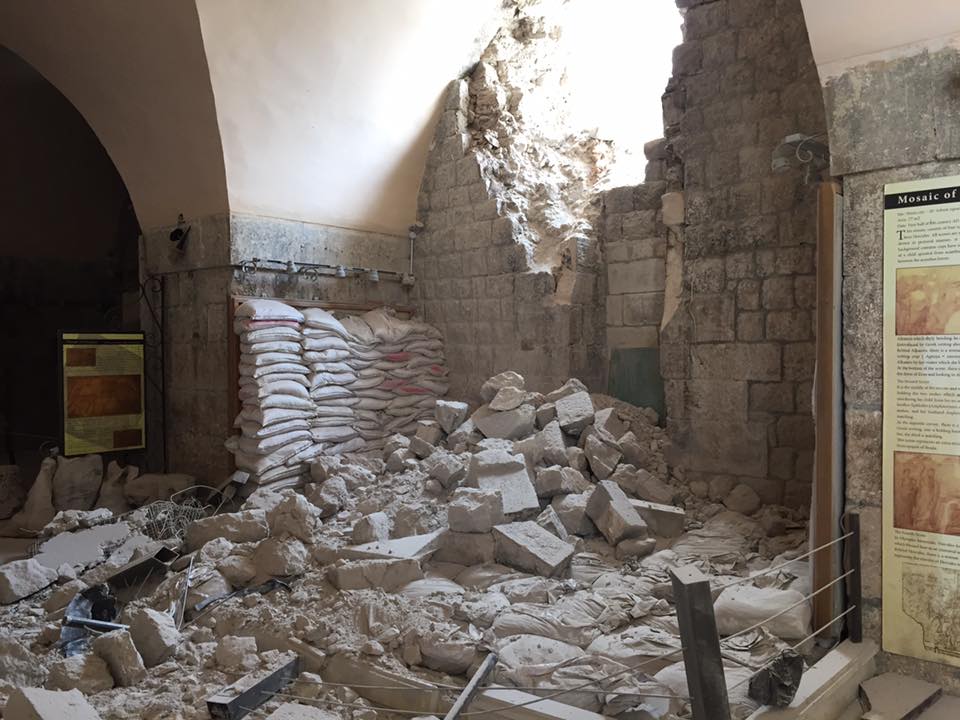
Damage from May 2016 Airstrike (TDA-HPI; 2016)
Upcoming Rebuilding Efforts
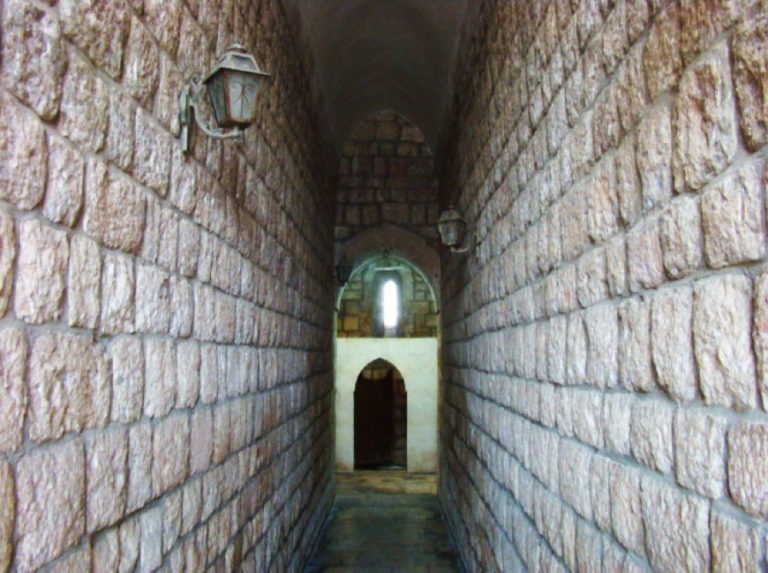
Wall prior to deviation
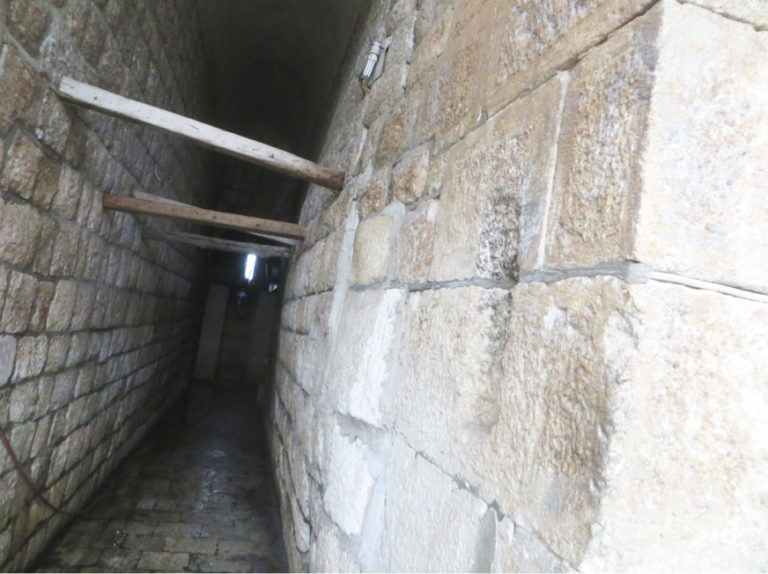
Deviated wall with temporary reinforcement
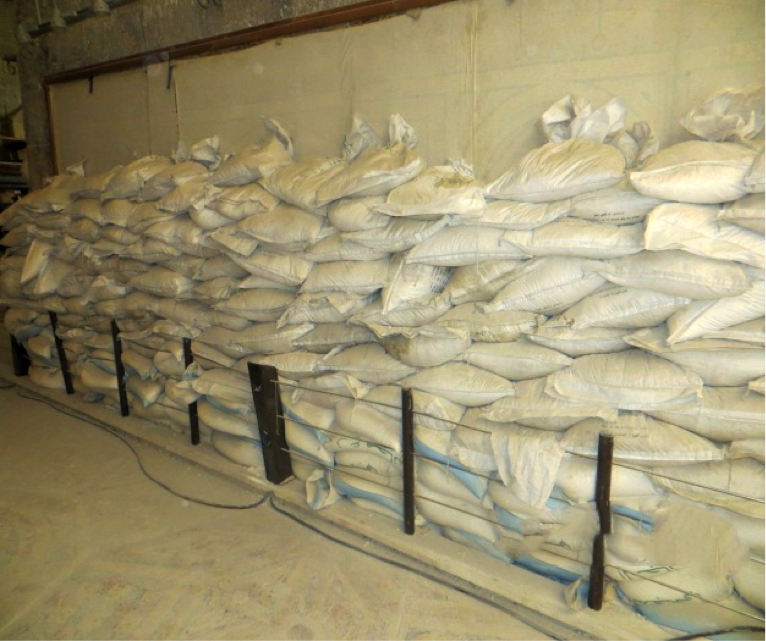
Sandbags Protect the Mosaics (TDA-HPI; March 2016)
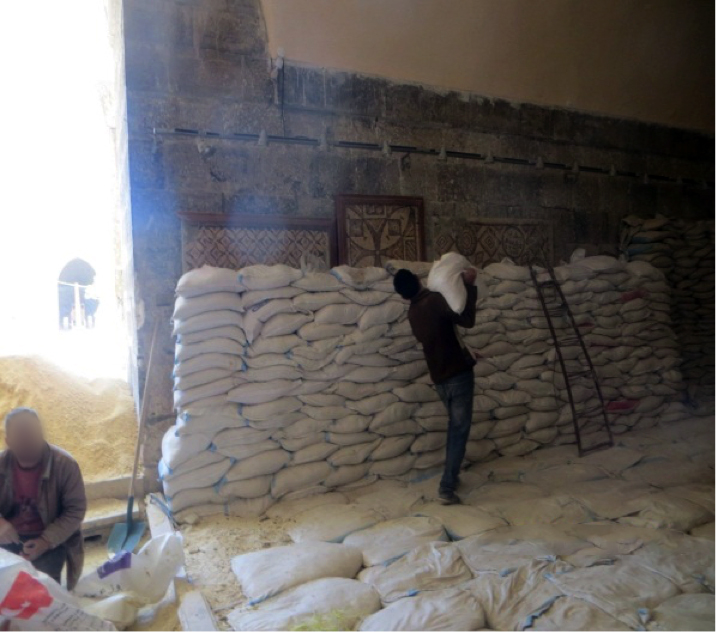
Sandbags Protect the Mosaics (TDA-HPI; March 2016)
Protecting Cultural Heritage for Syria
Unfortunately, as long as this conflict in Syria continues, cultural heritage will be under threat. It may feel like a hopeless situation, but there are organizations like ASOR Cultural Heritage Initiatives that are working hard to document cultural heritage damage and help Syrians and Iraqis to protect and preserve their heritage. The loss of these cultural sites is a symptom of the humanitarian crisis. This conflict is not only displacing and endangering populations, but, through the loss of cultural heritage, it is taking away an important part of their identity from before the war as well as their connection with the generations that have long gone.
Any transition process that aims to bring Syrians together and assist them in working towards ending the bloodshed and rebuilding their shattered country, needs to identify where common denominators exist between the opposing sides and provide mechanisms that will help them work towards consensus. With that in mind, ASOR and TDA-HDI believe that cultural heritage has a critical role in enhancing this Syrian identity and helping steer Syria on its path towards post conflict stabilization and reconciliation.
Once the current violence ends, the people of Syria will need to find ways to reconnect with the symbols that once united them across religious and political lines. The importance of this cultural heritage is nowhere more demonstrable than when it comes to the issue of national identity and what makes a Syrian a Syrian. Syria has a resilient sense of identity based on the concept of a shared citizenship around a common history and supported by a long and rich cultural heritage. The country’s ancient past as represented in this rich cultural heritage will be key to this. Protecting and preserving Syria’s history and heritage therefore is about safeguarding its future too.
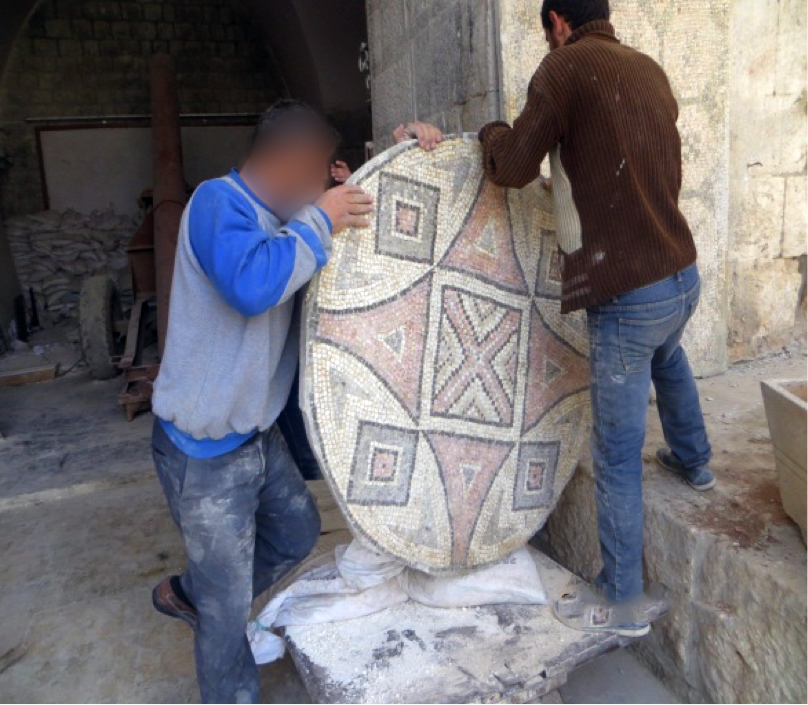
Workers move mosaics inside the museum (TDA-HPI; March 2016)
What is a Caravansary?
A caravansary (caravanserai) is a site at which caravans would have lodged during their journeys. The caravansaries or inns were generally rectangular in form with an open courtyard central to the inn. Lodgings surrounded the open courtyard where animals, including between 300 and 400 camels, were housed; camels, as load-bearing animals, were critical to traveling caravans. Such sites were critical for trade routes that crisscrossed Asia, North Africa, and parts of Europe and were widely utilized along the former Silk Road, and ancient Royal Road. Caravansarys were often located on the outskirts of towns and villages.
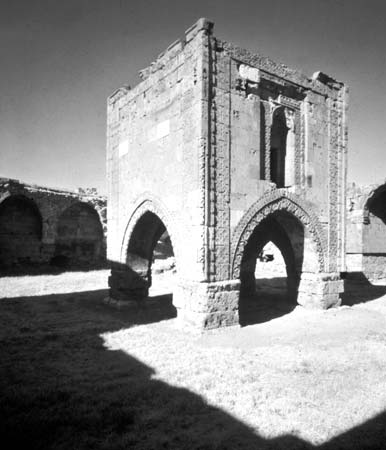
Courtyard of the Sultanhanı caravansary (13th century) Kayseri, Tur (Encyclopaedia Britannica)
Other ways you can donate:
Donate by Phone
Call ASOR at: 703-789-9229
Donate by Mail
American Schools of Oriental Research
209 Commerce Street
Alexandria, VA 22314
Make a Pledge (Donate Later)
Send an email to ASOR
